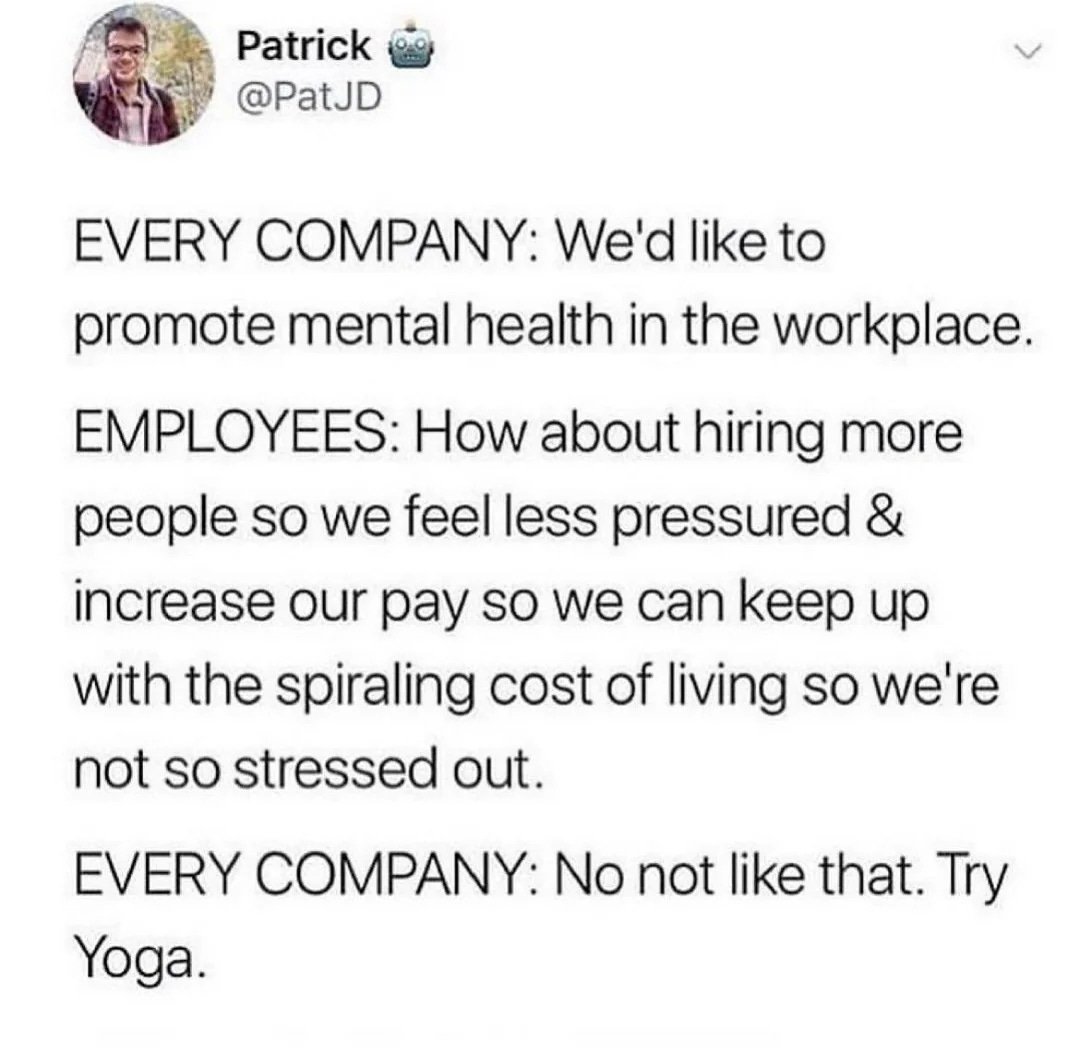Start Treating Employee Burnout Systemically
Fresh Ideas from Us
As we see brighter spotlights being shone on burnout amongst women, particularly women with marginalized identities, it’s critical to push the dialogue and solutions past micro-interventions.
So here’s the question that no one wants to ask aloud: is it burnout or is it exploitation?
The United States economy and broader society operate off the unpaid labor of women in the home combined with the overtaxing (and often, underpaying) of women in the workplace.
Micro-interventions that rely only on individual change are simply not enough.
When we see the same burnout issues arise year after year, leaders who hold organizational power and are committed to equity and employee well-being must zoom out and interrogate the larger implications of widespread burnout.
Here are some immediate changes you and your leadership team can consider:
Right-size position descriptions. Between us, we’ve written hundreds of job descriptions throughout our careers. More often than not, we’re seeing descriptions these days that are unrealistic and don’t support a balanced life. Get ahead of burnout by creating a rule to have a few rounds of review from multiple stakeholders to pare down descriptions at the outset of a hiring process. Make them realistic—a job that one person could actually do well. Make a dynamic practice of updating job priorities regularly (because we know a position doesn’t stay the same forever). This may mean redistributing how work gets done on your team.
Work on honest, consistent messaging. Have you heard variations of the conversation in the tweet below? Yeah, don’t do this. Saying you value employees and understand they need support and in the next breath hammering down on sales goals is not the way. Challenge yourself and peer leaders to get super clear on how you’re framing priorities for the team through the lens of manageable workloads.
Revisit meeting culture. Value people’s time y’all. Have the right meetings, at the right time, for the right reasons, and with the right people in the room. Want to have a meeting so people can just connect? It’s important, but just be clear about the outcomes for every meeting, always. The end.
Build in renewal time. As humans, we can’t be performing labor-intensive work 100% of the time. We need cycles of rest and renewal in between cycles of intensive work. As a team, make space for intentional and consistent “down time” that helps employees take care of themselves.
Quote from Somebody Else
“Burnout is a manageable state with remedies that, in many cases, can be immediately implemented. But exploitation is a cultural and structural issue that requires time, sweat equity, and systemic solutions.”
– Amira Barger
Probing Question
What’s one feasible thing you can do this week to address burnout on a systemic level?

